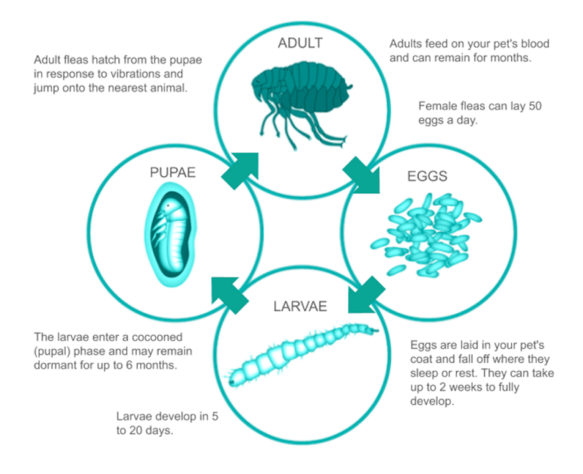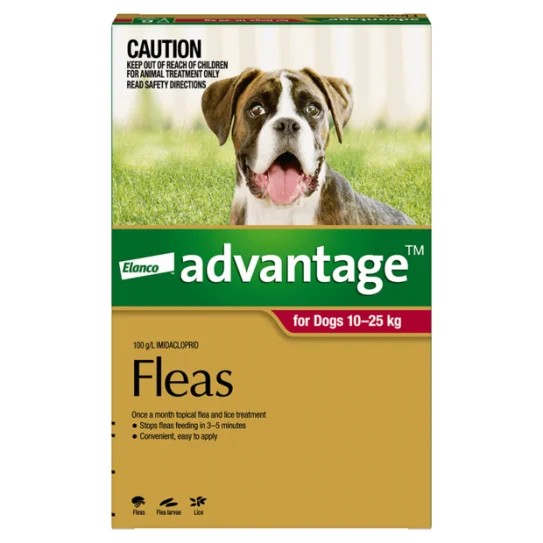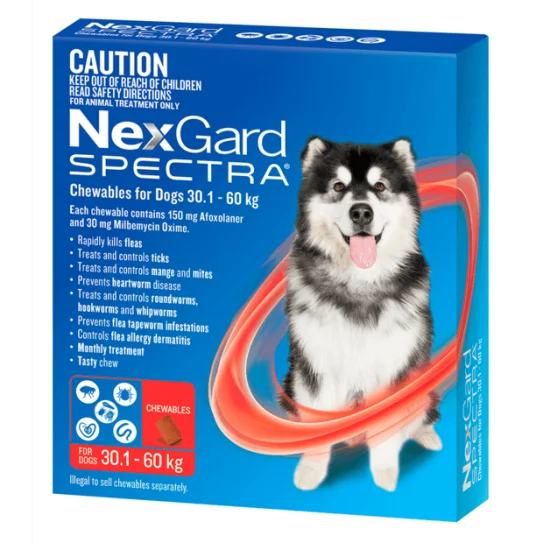FAQs
What kills fleas on dogs instantly?
The fastest-acting flea product available is Capstar, which comes in tablet form and begins to kill fleas on your pet within 30 minutes of administration. It is short-acting, lasting only 24 hours, however its rapid onset makes it useful at helping to clear heavy flea burdens or quickly make very itchy pets more comfortable.
Most modern chews and spot-ons on the market are also quite fast acting, though a little slower than Capstar; the majority will start to kill fleas within 6-12 hours, with most adult fleas on your dog killed within 24 hours.
Where to put flea treatment on dog?
This will depend on which product you are using (i.e. spot-on vs tablet). Spot-on products are generally applied by parting the hair on the back of the neck, and applying the product directly on to the skin in this area. This location will ensure that your dog isn't able to lick at the area, which would reduce the effectiveness of the product. Oral prevantatives, in tablet or chew form, are given by mouth.
How long does flea treatment take to work on dogs?
Again, this will depend on which product you're using. Most newer chews and spot-ons on the market will start to kill fleas within 6-12 hours, with most adult fleas on your dog killed within 24 hours. As previously mentioned, Captar tablets will start to kill fleas within 30 minutes. Always check the packaging or manufacturer's website for detailed information on each specific product.
How do dog flea collars work?
Most flea collars work by gradually releasing a consistent low dose of active ingredients that repel and/or kill fleas. These ingredients diffuse into the lipid (oily/fatty) layer of the skin for full body coverage. Newer flea collars, such as Seresto, tend to be more effective than older brands which may have less reliable modes of action.
Why does my dog have fleas after treatment?
There's nothing worse than feeling like you've just given your pet a treatment that hasn't helped, but don't be discouraged. If you have used the product correctly and at the correct dose for your pet's weight, it's most likely that it has been effective, it's just that as quickly as adult fleas are being killed by the treatment, there are pesky new juvenile adult fleas jumping on and hitching a ride.
With an effective and long acting flea treatment on board, your dog will work as a flea killing machine destroying all the adult fleas in their path. No new flea eggs will be laid, so over time the levels of flea larvae and pupae in the environment will drop off and there will be less reinfestation. Another reason it pays to be persistent and keep up that treatment year round!
How soon can I give my dog another flea treatment?
Every flea preventative will have a labelled usage frequency eg. monthly, three monthly etc. In certain situations it may be okay to use multiple different flea preventatives concurrently, or shorten the interval between applications. However this should only be done under the direct advice of a veterinarian, as some products may be contraindicated for concurrent use particularly if they contain the same or similar active ingredients. Always follow the label directions unless advised otherwise by your vet. You can also contact a Pet Circle veterinarian for advice if needed.
Can you overdose a dog on flea treatment?
The preventative products on the market have all undergone rigorous testing and have a wide safety margin, and most are still considered safe even if several times the labelled dose is given. If your pet's weight is in between two different weight ranges for a particular product, it is always best to opt for the higher weight range- this won't cause any adverse effects and will also ensure your pet is fully protected, avoiding the risk of under-dosing.
That being said, overdose is possible if a high enough dose is given. Always follow the label's dosage instructions, and if you have any concerns or questions, reach out to your pet's veterinarian or a Pet Circle vet.
Why is my dog still scratching after flea treatment?
Fleas, while a common cause of itching in dogs, are not the only possible culprit. If you have followed all of the steps in this article and your dog is still itchy, there may be an underlying reason for this such as food allergies, atopy or secondary skin infection. For more information on what could be causing your dog's itching once fleas are ruled out, take a look at the following articles:
Why does my dog have sensitive, itchy skin?
Does your dog have food allergies?
Atopic dermatitis in dogs
When your dog's itchy skin isn't about fleas
When can I wash my dog after flea treatment?
It's important to note that due to their route of use and mode of action, oral flea preventatives are not affected by bathing. If you are using a tablet or chew for your dog's flea prevention, there will be no impact on their bathing schedule.
However, if you are using a topical or spot-on treatment for your dog, it is likely that this will have an impact on when you can bathe them. For more information, take a look at How long after flea treatment can I bathe my dog?
Does washing a dog get rid of fleas?
Regular shampoos can be helpful in removing fleas and flea dirt physically from the coat, but will only have a temporary effect.
While flea shampoos are available, they are much less effective than modern oral or spot-on treatments, and are only effective at killing adult fleas for a very short period of time- as a result they are generally not needed or recommended.
Is dog flea treatment harmful to cats?
Flea treatments for dogs may contain dosages or active ingredients that are ineffective or even dangerous for cats. For example, some flea shampoos and spot-ons marketed for dogs that contain pyrethrins can be fatal if used on cats. Any preventative treatment should be used only for the species it is labelled for, unless directly informed otherwise by your pet's treating veterinarian.
When to start flea and tick treatment for puppies?
Depending on the product, flea and tick prevention can usually be started at around 6-8 weeks of age. Always make sure to check the label, as there is often also a minimum weight that your pup needs to reach before you can safely use the product. Due to the multiple 'all-in-one' products on the market, you can combine flea and tick protection with worming, or you might prefer to give two separate products.
For very young puppies with fleas, or puppies that are too small for preventatives, it is best to ensure mum is on a preventative that is safe to use while lactating (if the puppy is still with mum) and use a flea comb on the puppy to gently remove any fleas. Another option would be Frontline spray which can be used from 2 days of age.
Depending on the product, flea and tick prevention can usually be started at around 6-8 weeks of age. Always make sure to check the label, as there is often also a minimum weight that your pup needs to reach before you can safely use the product. Due to the multiple 'all-in-one' products on the market, you can combine flea and tick protection with worming, or you might prefer to give two separate products.
For very young puppies with fleas, or puppies that are too small for preventatives, it is best to ensure mum is on a preventative that is safe to use while lactating (if the puppy is still with mum) and use a flea comb on the puppy to gently remove any fleas. Another option would be Frontline spray which can be used from 2 days of age.
What flea treatment is safe for nursing dogs?
While most parasite preventatives are generally believed not to cause issues during pregnancy, only some have actually been tested to prove their safety. Therefore, we recommend only using products that have had their safety evaluated during pregnancy and lactation.
For a complete list of products safe for use during pregnancy and lactation, see our Pregnant Dog Guide.
Conclusion
While fleas are an unwelcome guest in any home, following the steps outlined in this article will ensure you're quickly on your way to eliminating them for good. Breaking the flea life cycle by using effective flea treatment, thoroughly cleaning the environment and treating any other pets in the household are key ways to get on top of a flea infestation, while ongoing, year-round flea prevention is crucial to ensure that your pet and home will remain flea-free.
For a more comprehensive guide on the flea treatments currently available, as well as some points to consider when selecting a flea preventative, see our article on Best Flea and Tick Treatments for Pets.







